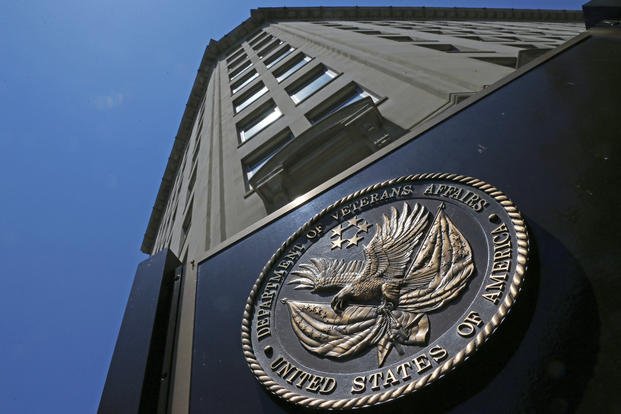Ten years after a scandal over wait times at Department of Veterans Affairs medical centers sparked new programs to increase veterans' access to private health care services, a divided Congress is debating the future of VA medical care and how best to fund the department.
The VA has requested $369.3 billion for its fiscal 2025 budget, including nearly $150 billion for health care. Within that amount, the VA has allocated $86 billion for care provided in VA hospitals and clinics and $41 billion for private network care.
The rise in cost and utilization of the latter, commonly referred to as community care, and the Biden administration's focus on providing care to veterans in VA facilities, have set off debate among lawmakers during this year's budget deliberations over how to fund VA care and where veterans should get their medical treatment.
Read Next: 'Restore Real Value': House Panel Wants to Give Junior Enlisted Troops 15% Pay Raise
Democrats largely want to strengthen the VA's own medical infrastructure and staff, which they argue is less expensive and provides better care for veterans, while Republicans want the VA to focus on providing quality care while also allowing veterans to choose who they want to see, including outside the VA.
VA officials have warned that the department's community care budget is growing unsustainably, and they favor improving VA programs and services and ensuring that veterans get care in VA hospitals and clinics.
"Right now, we're at a critical moment for shaping and securing the future of veteran health care in America, so we will work reliably to offer a VA care option to every veteran, even vets who qualify for community care admission," VA Secretary Denis McDonough said Thursday in a hearing before the House Veterans Affairs Committee. "We want to bring as many vets as possible into our care, because study after study shows that vets do better at VA."
A scandal erupted throughout the VA in the spring of 2014 after allegations surfaced that as many as 40 veterans died while waiting for treatment at the VA Phoenix Health Care System.
A 2014 VA inspector general's report found that Phoenix medical center staff manipulated wait-lists to meet department standards, delaying appointments for veterans, and the wait time issues were not confined to Phoenix: The VA inspector general found that appointment scheduling subsequently was a nationwide problem, with issues found at 77 other VA facilities.
To increase access to care, Congress passed the Choice Act in 2014 under President Barack Obama that consolidated the VA's community care programs and allowed veterans who lived more than 40 miles from a VA medical facility or spent hours on the road going to appointments to receive community care.
The access standards were expanded under the Mission Act, signed by President Donald Trump in 2018, to include those who faced more than a 30-minute drive for primary care or mental health services or 60 minutes for specialty care. The law also allowed veterans who faced more than a 20-day wait for a primary care or mental health appointment and more than 28 days for specialty care to get private care.
The introduction of the PACT Act, which broadened health care and benefits for millions of combat veterans, expanded the number of veterans eligible for VA care. In the past year, the department has enrolled more than 401,000 veterans, 30% more than the previous year.
To handle the influx and increase demand for services, the VA has requested a budget increase of nearly 13% for fiscal 2025. But those increases are largely for mandatory spending, while the $134 billion in discretionary spending represents one-tenth of a percentage point lower than the 2024 amount.
Operating within budget constraints, the VA has backed off a hiring spree it initiated last year within the Veterans Health Administration, and proposed in its budget to cover nearly half of community care costs by using alternative funding sources such as the Toxic Exposures Fund and medical debt collections.
The strategy leaves lawmakers on both sides of the aisle concerned about benefits and services for veterans.
California Rep. Mark Takano, the ranking Democrat on the House Veterans Affairs Committee, said the VA's health care budget is "out of balance."
"Rather than directing billions of dollars to the community, we must provide VA with the necessary resources and staffing to ensure that direct care is robust, modern and meeting veterans where they are," Takano said.
On the other side of the dais, Rep. Matt Rosendale, R-Mont., said Congress' job is to ensure that veterans get needed health care and services regardless of delivery.
"What our job here is, is to make sure that veterans get the care that they have earned, that they deserve, when they want it, where they want it -- not to protect the VA," Rosendale said.
The debate over where veterans should receive their health care comes as the Defense Department is seeking to draw more patients back to DoD hospitals and clinics after it spent seven years engaged in reforms designed to focus the system on providing treatment to service members and sending retirees and family members to care through the civilian Tricare network.
In a memo to senior Pentagon leaders in December, Deputy Defense Secretary Kathleen Hicks said the reforms had left military treatment facilities "chronically understaffed" and unable to provide timely, quality care.
In the hearing Thursday, McDonough warned against any congressional moves that would take money away from funding VA-provided health services and staff and could, essentially, lead VA to functioning as a medical insurance entity, managing payments for community care.
"Let me just underscore, again, my appreciation for this committee's support, and the entire Congress' support, on a bipartisan basis for historic investments in VA, including throughout the pandemic," McDonough said. "Those investments mean that the unit cost per care over time -- because of the investment in infrastructure to date -- makes VA a longer-term, better outcomes-based investment for the taxpayers."
The majority of veterans service organizations support the VA's efforts to invest in its own staff, infrastructure and patients. In their annual Independent Budget, Disabled American Veterans, Paralyzed Veterans of America and the Veterans of Foreign Wars said that the VA's proposed 2025 budget "raises concerns" over the the reduction of health care personnel and what they described as the "continued over-reliance on community care rather than investing in VA's internal capacity."
Concerned Veterans for America, a conservative-backed veterans group, held a press conference Tuesday to highlight the issues at the VA a decade after the Phoenix scandal, saying that the department continues to block access to community care nationwide and denies veterans information about their benefits.
According to CVA, wait times for primary care at Phoenix area facilities are between 20 and 59 days for primary care and 45 to 105 days for mental health care.
"Arizona veterans are still struggling," CVA officials said in a release.
Related: 2 Lawmakers Trying to Expand Access to Outside Doctors for Vets Despite VA Push to Rein in Costs













